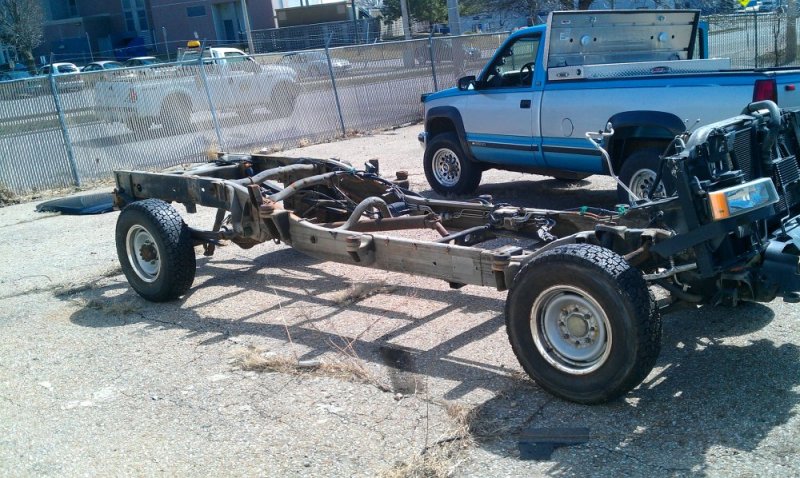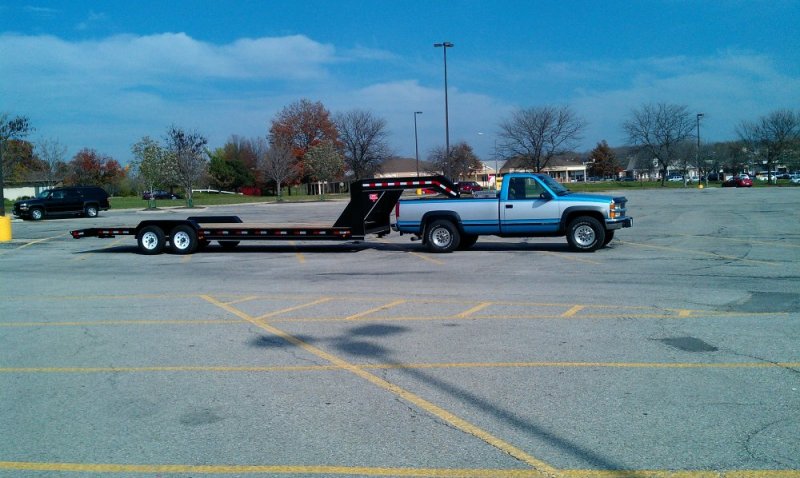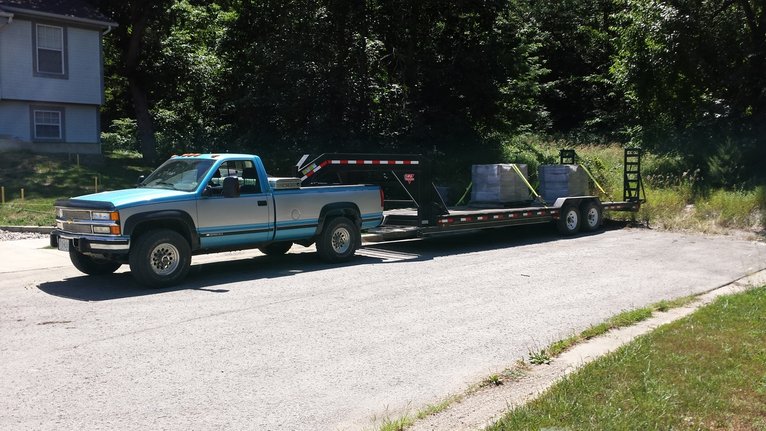SmithvilleD
Active Member
If needed, that is the type of proportioner I've used before. But I need to see if adjustment is needed, & then better understand how the stock proportioner is fit (incorporated into antilock?).
As background on what brought me to this point, my truck's rearend is worn & needed new bearings/ring/pinion. About that time, I found an '04 K2500 rolling chassis on Craigslist for $350-400 (can't recall now). Bought it for the rear diff but couldn't pass up scrounging more potentially useful parts from it.

I'd recently completed rebuilding my 26' GN Superwide Carhauler, which weighs 5500# empty. Truck had fresh good quality friction on the stock discs/drums & trailer had new brakes.
The second pic is of truck & a trailer load of landscaping block making total truck/trailer weight around 18.5k lbs. With this load, and rolling low & slow into my home town at around 35 mph, someone accidentally pulled out in front of me. Granted the truck wasn't designed to haul or stop this load. And 33" tires make it worse. But I was still disappointed that it was all I could do to get the truck's brakes close to locking - at this low speed (trailer brakes performed as they should & were set so they locked just after I got one of the fronts close to locking.)

Fortunately I was going just barely slow enough to avoid the collision. My point is I know I'm beyond what the truck was designed to do. But it's still gonna occasionally be called upon to do it. I enjoy this type of work & had the parts I think should prove to do the job better. They certainly do on the GMT800 3/4 & 1T's.
As background on what brought me to this point, my truck's rearend is worn & needed new bearings/ring/pinion. About that time, I found an '04 K2500 rolling chassis on Craigslist for $350-400 (can't recall now). Bought it for the rear diff but couldn't pass up scrounging more potentially useful parts from it.

I'd recently completed rebuilding my 26' GN Superwide Carhauler, which weighs 5500# empty. Truck had fresh good quality friction on the stock discs/drums & trailer had new brakes.
The second pic is of truck & a trailer load of landscaping block making total truck/trailer weight around 18.5k lbs. With this load, and rolling low & slow into my home town at around 35 mph, someone accidentally pulled out in front of me. Granted the truck wasn't designed to haul or stop this load. And 33" tires make it worse. But I was still disappointed that it was all I could do to get the truck's brakes close to locking - at this low speed (trailer brakes performed as they should & were set so they locked just after I got one of the fronts close to locking.)

Fortunately I was going just barely slow enough to avoid the collision. My point is I know I'm beyond what the truck was designed to do. But it's still gonna occasionally be called upon to do it. I enjoy this type of work & had the parts I think should prove to do the job better. They certainly do on the GMT800 3/4 & 1T's.




